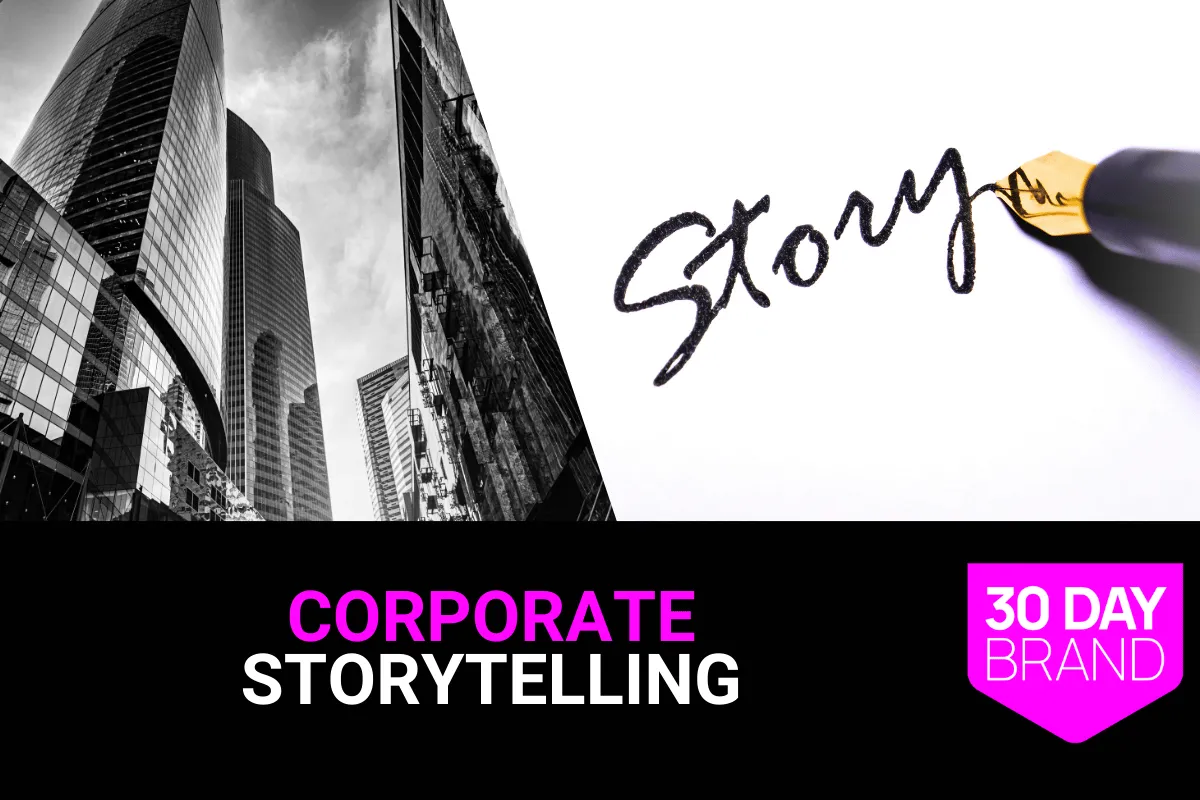
Corporate Storytelling: Engaging Stakeholders Through Narrative
Founders and executives face a challenge: products can be copied, but stories cannot. Corporate storytelling has become a key lever for aligning teams, inspiring customers, and building trust with investors. This guide shows how to craft narratives that work for both internal and external stakeholders. For foundational context, see our brand storytelling complete guide.
Corporate Storytelling Definition
Corporate storytelling is the structured use of narrative to communicate purpose, values, and vision across diverse stakeholder groups.
The 12 Corporate Storytelling Techniques
1) Internal Storytelling
What it is: Narrative that builds culture and alignment.
How to do it:
Link roles to vision.
Celebrate wins.
Foster community.
Expected results: Strong culture increases retention by 28% (McKinsey, 2023).
Time to implement: 2–4 weeks.
Cost: Workshops + content.
2) External Storytelling
What it is: Narrative for customers, investors, and community.
How to do it:
Show transformation.
Prove expertise.
Highlight responsibility.
Expected results: 73% of B2B buyers research vendors before first contact (Salesforce, 2024).
Time: Ongoing.
Cost: PR + marketing.
Learn more in brand storytelling for B2B.
3) Employee Narratives
What it is: Internal heroes’ stories.
How to do it: Spotlight staff wins, share innovation stories, recognize collaboration.
Expected results: Employee recognition increases engagement by 31% (Gallup, 2024).
Time: Monthly cadence.
Cost: Internal media.
4) Customer Narratives
What it is: Testimonial and case study storytelling.
How to do it: Frame the customer as hero, brand as mentor, document outcomes.
Expected results: 55% buy after loving a story (Headstream, 2023).
Time: 2–3 weeks.
Cost: Video or write-ups.
Related: emotional branding.
5) Investor Narratives
What it is: Growth, strategy, and market positioning stories.
How to do it: Use data, show milestones, demonstrate leadership clarity.
Expected results: Transparent storytelling raises valuation multiples (Harvard Business Review, 2023).
Time: Quarterly updates.
Cost: IR + analyst relations.
6) Community Narratives
What it is: CSR and sustainability storytelling.
How to do it: Highlight philanthropy, environmental steps, social good.
Expected results: 77% prefer brands committed to ESG (Edelman, 2024).
Time: Annual reports.
Cost: CSR budget.
7) Vision Story
What it is: Future-focused narrative.
How to do it: Paint aspirational picture, show roadmap, inspire belief.
Expected results: Inspires alignment across stakeholders.
Time: 1 week.
Cost: Leadership comms.
8) Values Story
What it is: Proof of brand values in action.
How to do it: Tell stories of values lived, not just claimed.
Expected results: 86% say authenticity drives brand decisions (Stackla, 2023).
Time: Ongoing.
Cost: Internal + PR content.
9) Change Story
What it is: Story for transition moments.
How to do it:
Acknowledge past.
Explain why.
Paint new future.
Expected results: Narrative framing increases change adoption (McKinsey, 2023).
Time: During change.
Cost: Internal + external comms.
10) Founder’s Story
What it is: Origin narrative.
How to do it: Share the why, challenges, lessons.
Expected results: Stories of founders increase credibility in 65% of B2B buyers (Edelman, 2024).
Time: 1–2 weeks.
Cost: Content package.
11) Team Story
What it is: Collective success stories.
How to do it: Highlight teamwork, show diversity, connect outcomes.
Expected results: Collaborative teams perform 30% better (Gartner, 2024).
Time: Monthly.
Cost: Internal media.
12) Corporate Culture Stories
What it is: The myths and legends that define your culture.
How to do it: Curate stories of innovation, resilience, and mentorship.
Expected results: Culture-driven firms outperform by 33% (HBR, 2023).
Time: Ongoing.
Cost: Leadership + HR.
Quick Implementation Guide
Start: Audit current narratives for employees, customers, and investors.
Then: Align messaging with a single vision + value set.
Measure: Track employee engagement, NPS, investor confidence, and CSR mentions.
Key Statistics
73% of B2B buyers research vendors pre-contact (Salesforce, 2024).
55% of consumers buy after loving a story (Headstream, 2023).
23% revenue lift from consistent brand presentation (Lucidpress, 2024).
FAQ: Corporate Storytelling
1. How is corporate storytelling different from brand storytelling?
Corporate storytelling includes internal and investor narratives, not just customer-facing ones.
2. Why is leadership storytelling critical?
Because the CEO sets the vision and inspires stakeholder belief.
3. How do I tailor for different stakeholders?
Adjust proof and emphasis, but keep core truths aligned.
4. How does storytelling support change management?
Narratives turn resistance into resilience by explaining the why and showing a future.
5. How can storytelling help attract talent?
Stories of culture and values boost recruiting and retention.
Let’s Align Your Story: Next Steps
Strong corporate narratives build trust inside and outside your walls. Run a fast diagnostic now: Run your free Brand Message Analyzer to check if your corporate message is aligned.










